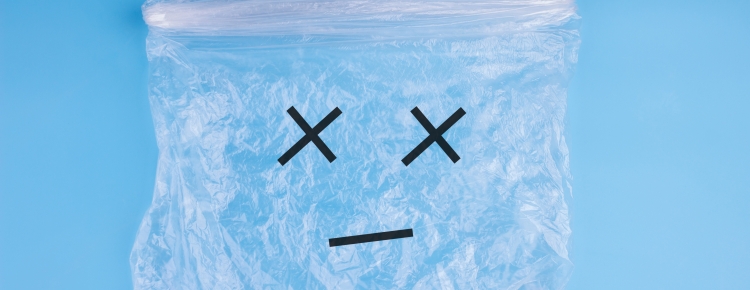
It’s not a pretty picture—non-biodegradable, petroleum-based plastics are inexorably choking our waterways, our oceans, and threatening ecosystems around the world. According to a recent article by Fast Company, roughly eight million tons of plastics end up fouling our oceans every year. What’s worse—this plastic menace is growing, as emerging economies around the world use more plastics yet have inadequate or no recycling and reuse programs in place. Some scientists predict that by the year 2050, should conditions remain unchanged, the oceans will contain more plastics in weight than marine life. We cannot let this happen!
Fortunately, materials science is developing several planet-friendly alternatives to conventional plastics—in several cases, these materials derive from renewable sources and are highly biodegradable.
Here are some examples of promising plastic alternatives:
- PDC (prodegradant concentrate) additives promote oxidation of conventional plastics, degrading them into brittle, low molecular weight fragments. Naturally-occurring microorganisms feed on and convert these fragments into CO2, water, and biomass. Standard polyethylene bags with a 3% PDC additive will almost completely biodegrade over the course of four weeks to microorganism-grade food particles.
- Casein (milk protein) plastics infused with special additives can replace polystyrene in products like cushions, insulation, packaging, and other materials, and they biodegrade fully and quickly. Casein plastics applied as single-use food wrappers and pouches are excellent for protecting food from oxygen.
- Liquid wood is a promising bioplastic material sourced from renewable pulp-based lignin. This biopolymer material looks, feels, and acts like conventional plastics, yet it can be recycled and is readily biodegradable.
- Chicken feather protein is the renewable source for keratin-based plastics. Such plastics meld the strength properties of keratin in methyl acrylate (found in nail polish) to create a tear-resistant, biodegradable product.
- PCL (polycaprolactone) polyesters are a biodegradable substitute for polyethylene terephthalate (PET) typically used in water bottles. PCL polyesters completely biodegrade in six weeks when composted. However, they do not come from renewable sources and can be relatively expensive to produce. Blending PCL with corn starch can reduce the costs of PCL and enhance biodegradability.
- PHA (polyhydroxyalkanoate) polyesters act like polypropylene but are fully biodegradable when composted. These plastics are derived from sugar sources such as molasses or even activated sludge from wastewater treatment. PHA plastics are expensive to produce compared to oil-based plastics, but cheaper sources of raw materials can reduce the expense.
- PLA (polylactic acid) polyesters are primarily created from the lactic acid found in corn, wheat, or sugarcane—all renewable sources. PLA plastic substitutes are similar to polystyrene and PET and are used to produce bottles, bags, and film materials. When burned, PLAs release no toxins. PLAs contain 20% to 50% less petroleum-based products than oil-based plastics. They are also biodegradable, but to a lesser extent than other plastic alternatives. As with PCLs, adding starch to PLAs helps to reduce manufacturing costs and improve biodegradability
Adding to the list are other unique options to replace conventional plastic products:
- Edible spoons and other cutlery can be made from wheat flour, rice flour, and sorghum flour; and similar combinations are being used to produce edible plates, six pack rings, and other serving utensils.
- Mushrooms (specifically the mycelium or fungal component that exists underground) can be mixed with hemp or oats to make packaging, plant pots, lampshades, tabletops, and other products. The material is as water-resistant as Styrofoam yet will break down in six months when landfilled.
- Biodegradable polymer films made from chitosan, an artificial polymer sourced from shrimp shells, is ideal for making bags.
- Similar to glass, platinum cured silicone can be made almost completely from sand, without fillers like BPA, BPS, PVC, phthalates, or other toxins. It retains flexibility and durability and can replace nearly any disposable plastic, from cling wrap and straws to sandwich bags and containers.
Moreover, glass is making a come-back—a reversal of a decades-long trend where plastics replaced glass. Glass is inexpensive to manufacture, durable and can be easily recycled and reused. Yes, it can break, but it won’t melt and it won’t seep chemicals that end up in food and body.
There is no one remedy to solve our massive plastics waste problem. However, growing awareness of the issues is changing our behavior to clean up our act, to become more responsible stewards of our environment. And materials science is always developing exciting, new, and environmentally-friendly alternatives to help us create the change we so desperately need. Keep your eye on Intengine for the latest solutions to our disposable problems.
Tags: plastic free, zero waste, BPA free
